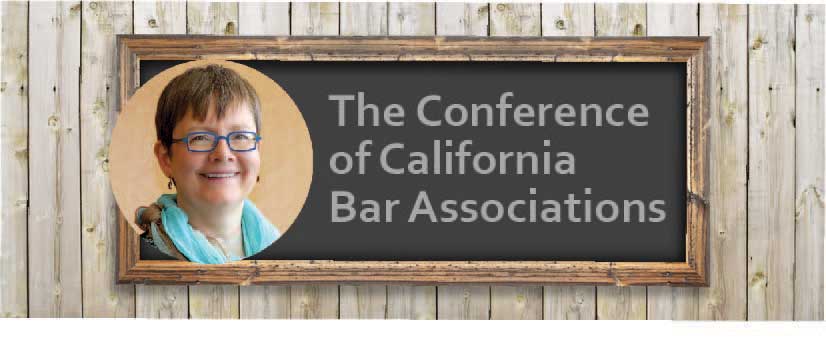
An Introduction to the Conference of California Bar Associations
Editor’s Note: This issue of the Contra Costa Lawyer features the Conference of California Bar Associations (CCBA) and should not be confused with the Contra Costa County Bar Associations (CCCBA).
For the past several years, the Conference of California Bar Associations (CCBA) has been one of the most effective lobbying organizations in California. Many people who have not participated in the CCBA may think that the organization is only an annual meeting, the Conference of Delegates. The 85th annual Conference convened in San Diego in September 2018. This dynamic and fun meeting is the culmination of hours of thought and work, and begins the process of presenting proposals to the California legislature, with that work lead by the CCBA lobbyist, currently Larry Doyle.
The CCBA’s success is largely due to the review and revision of the proposals over the course of several months. Many of the ideas begin with delegates trying to solve real-life problems they encountered in their practice. They submit resolutions to the CCBA to address these problems. Other resolutions are designed to correct unintended consequences of laws written by non-lawyers and some bring outdated laws current. While some of the CCBA’s work can be mundane, the organization has also been on the leading edge of social change, being among the first groups to support elimination of discrimination in employment and housing, and proposing rules and statutes designed to assure access to the courts.
The formal process begins when an individual drafts a resolution. To be considered by the CCBA, each resolution must be sponsored by either a local bar association or 10 members. The resolution deadline is typically in January or February of each year. All submitted resolutions are posted to the CCBA’s website. Once resolutions are posted, local and specialty bar associations have a window of time to submit written opposition or proposals to modify the resolutions.
Each resolution is reviewed in detail by the CCBA’s Resolutions Committee, which is comprised of approximately 20 lawyers. The Resolutions Committee is a diverse group of attorneys, with prosecutors and criminal defense attorneys, civil litigators, probate attorneys, corporate attorneys, other areas of practice, large firm attorneys, solo practitioners, and attorneys who practice in major cities and rural areas. For each resolution, a member of the Resolutions Committee looks at existing statutes and case law, evaluates whether the resolution will effect the change the proponent desires, and prepares a report analyzing the problem, the proposed solution, and recommending a position on the resolution. These reports are reviewed by the Resolutions Committee leadership, which may ask for revisions, clarification, or even a change of position. Then, the full Resolutions Committee meets for 3 days to discuss the resolutions and its final position, which is published on the CCBA website.
Most of the local and specialty bar associations that attend the Conference go through a similar process. This year, the Contra Costa County Bar Association delegation met three times, over dinner, to discuss the resolutions and determine what position they would take. While the bar association may have a formal position, each delegate is free to argue or vote his or her conscience at the Conference.
Before the Conference, delegations may discuss proposed amendments with the proponent. A spreadsheet of each delegation’s positions is published. Some authors accept amendments to save their proposals. Others realize that nothing will save the resolution and withdraw it, often to bring it back in revised form the following year.
At the annual Conference, the resolutions are debated on the merits. This time, the body is larger, typically approximately 200 attorneys from around the state. There are amendments, new arguments for and against resolutions, and a vote by the entire body.
Resolutions that are approved by the entire body are sent to the CCBA lobbyist. The author is asked to identify groups that would support the resolution as well as likely opponents. If a legislator is willing to take on one of the resolutions, and it becomes a bill, the author may well be invited to speak with the legislator or her staff, or even to speak at committee, or when the bill is presented in the Senate or Assembly. Each year at the Conference, authors of bills that have become law receive framed copies of those bills, signed by the legislative sponsor. The number of signed bills seems to grow annually.